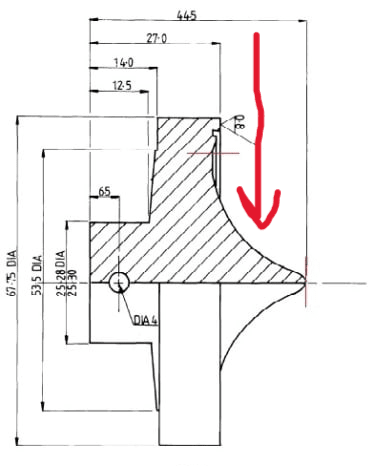You say you are trying to calculate for the purpose of 'Trevitesting'.
Trevitesting is the trade name of the 'in-situ' testing of Pressure-relief Valves by devices made only and licensed by the company Furmanite.
The generic term is In-Situ Testing.
For In-Situ Testing, it is the nozzle seat pressure area that is necessary to to know, in order to determine the set pressure result from a in-situ test.
The nozzle seat pressure area is generally smaller than the disc seat area. This is standard design of pressure-relief Valves - the spring load of the valve is concentrated from the disc seat area to the smaller nozzle seat area, and that's why the nozzle pressure area is used.
Pressure-relief Valve manufacturers are often asked to document the actual, as measured outside and inside diameters of the nozzle seat. In the past we used to record these measurements on the test certificate for users convenience for when they wanted to do in-situ testing. Each one was recorded as it was insufficient to take the manufacturing drawing sizes, which has tolerances, and could make a small difference.
Your manufacturer has probably given you the nozzle seat area.
Note also that regardless of what the in-situ test device salesman tells you, you cannot determine lift and blowdown from in-situ testing. Yes, it produces a nice graphical report that shows this, but this is artificial as the system has itself not gone into overpressure, against which the stand alone valve would react accordingly (achieving its certified lift and expected blowdown/closing). In-situ testing is verifying expected set pressure only.
Note that there is a separate safety/relief valve forum on eng-tips.
*** Per ISO-4126, the generic term
'Safety Valve' is used regardless of application or design ***
*** 'Pressure-relief Valve' is the ASME/API used term ***



